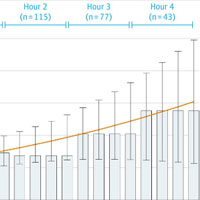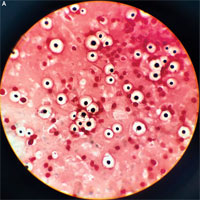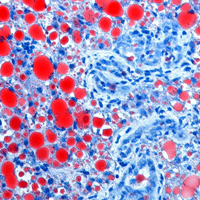Tag: infection

Difficult-to-Treat Resistance in Gram-negative Bacteremia at 173 US Hospitals: Retrospective Cohort Analysis of Prevalence, Predictors, and Outcome of Resistance to All First-line Agents
Nonsusceptibility to first-line antibiotics is associated with decreased survival in GNBSIs. DTR is a simple bedside prognostic measure of treatment-limiting coresistance. The Premier Database was analyzed for inpatients... read more

Sepsis is a Preventable Public Health Problem
There is a paradigm shift happening for sepsis. Sepsis is no longer solely conceptualized as problem of individual patients treated in emergency departments and intensive care units but also as one that is addressed as public... read more

Association Between the New York Sepsis Care Mandate and In-Hospital Mortality for Pediatric Sepsis
In New York State following a mandate for sepsis care, completion of a sepsis bundle within 1 hour compared with not completing the 1-hour sepsis bundle within 1 hour was associated with lower risk-adjusted in-hospital mortality... read more

Pediatric Sepsis Care Within an Hour Decreases Chance of Death
More than one in 10 children hospitalized with sepsis die, but when a series of clinical treatments and tests is completed within an hour of its detection, the chances of survival increase considerably, according to a new... read more

Cryptococcus Neoformans Meningoencephalitis
A 36-year-old man presented to the emergency department with a 2-week history of fever, headache, drowsiness, and photophobia. He was previously healthy and was sexually active with men. The physical examination was notable... read more

C. difficile risk raised by using same hospital bed as antibiotic-treated patient
Antibiotic use is associated with greater risk of Clostridium difficile infection, but according to a new study, you do not necessarily need to take antibiotics for them to pose such a risk. Researchers suggest just using... read more

Foleys Aren’t Fun: Patient Study Shows Catheter Risks
A new study puts large-scale evidence behind what many hospital patients already know: Having a urinary catheter may help empty the bladder, but it can hurt, lead to urinary tract infections, or cause other issues in the... read more

Immunotherapy for Sepsis: A Good Idea or Another Dead End?
THE treatment of sepsis remains an intractable problem in critical care. It has been called the “graveyard”1 for pharmaceutical companies in recognition of dozens of negative clinical trials; this reflects multiple distinct... read more

Decatecholaminisation during sepsis
While necessary and life-saving in the early fight or flight reaction to any insult, prolonged adrenergic stress is detrimental and contributes to organ dysfunction. In the largest trial to date, Morelli et al. enrolled septic... read more

Bacterial protein structure could aid development of new antibiotics
Bacterial cells have an added layer of protection, called the cell wall, that animal cells don't. Assembling this tough armor entails multiple steps, some of which are targeted by antibiotics like penicillin and vancomycin.... read more

Understanding Central Nervous System Efficacy of Antimicrobials
Defining the optimal treatment of Central Nervous System (CNS) infections is one of the most challenging tasks for the intensivists; the therapeutic window is narrow, and the alternative drug options more limited than with... read more

Antibiotic Decisions in the ICU: A Dragon’s Tale
Medical decision-making about antibiotic use in critically ill patients is challenging and complex. The need for antibiotic stewardship requires judicious prescription and choice of antimicrobials, as the need for effective... read more

Utility of Adjunct Antibiotics After I+D – Systematic Review + Meta-Analysis
Skin and soft tissue abscesses are a common emergency department (ED) presentation. The approach to management has changed little in recent decades: incision and drainage (I+D) and then discharge home with follow up. However,... read more









